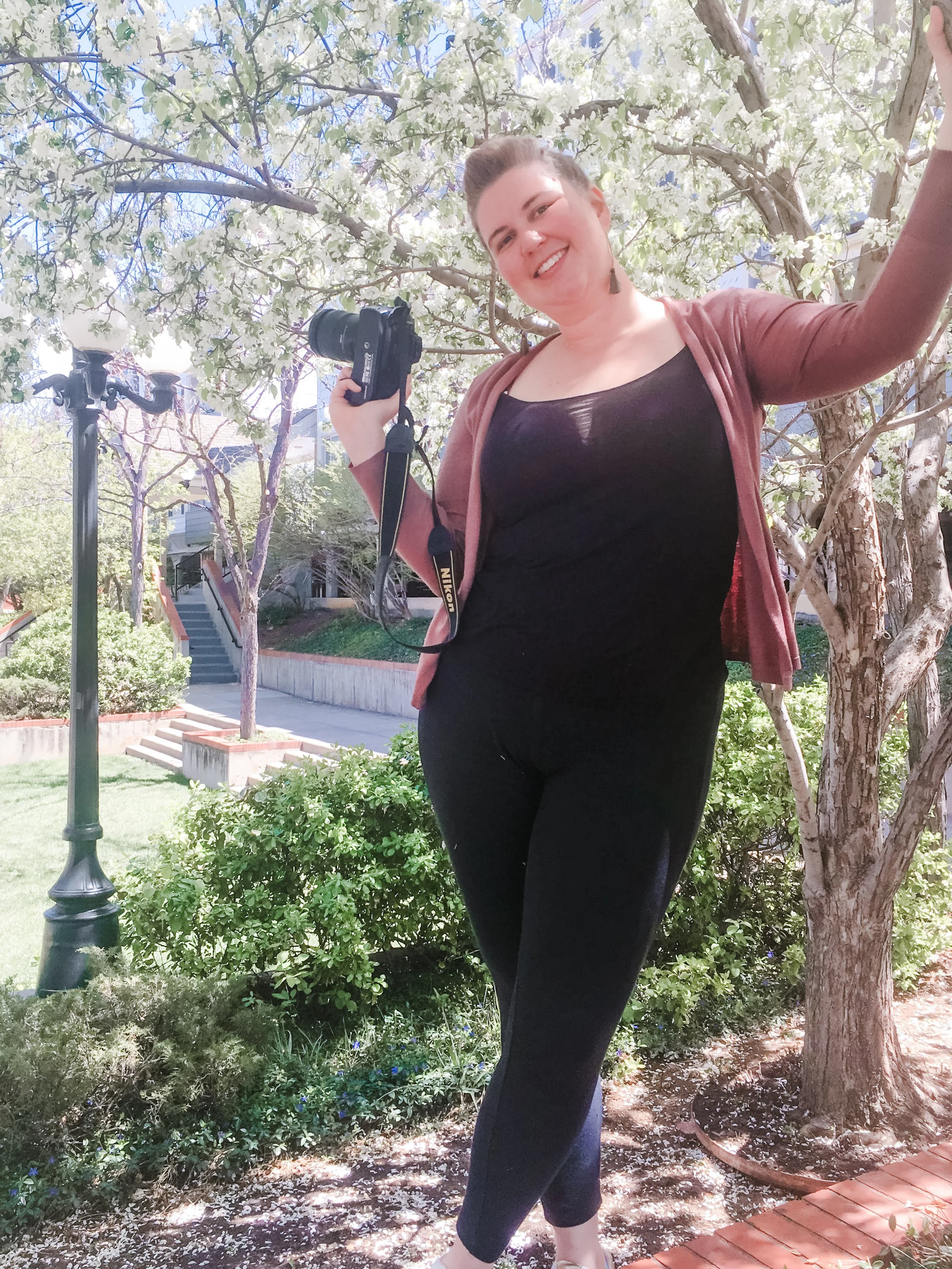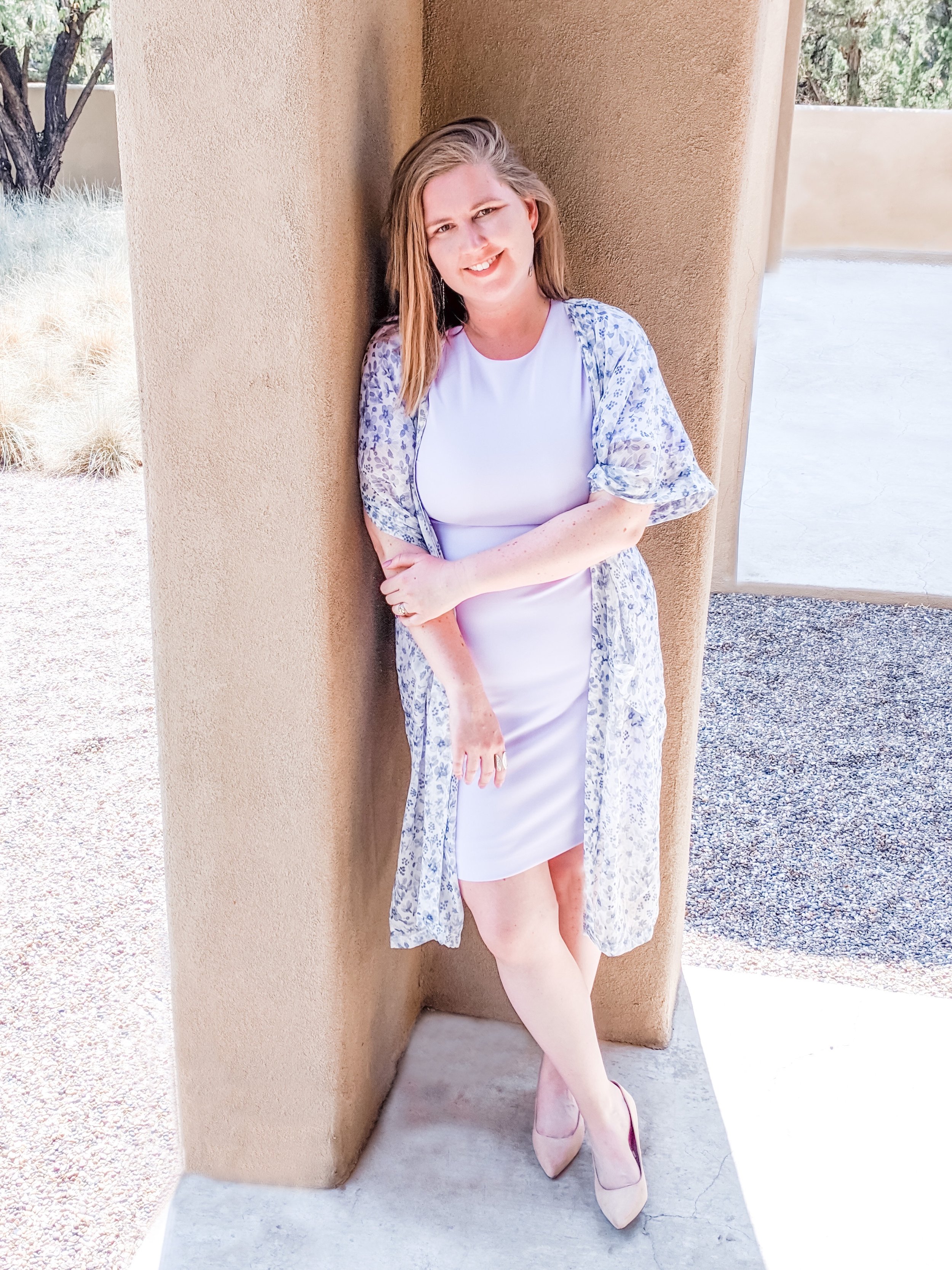How to Set Healthy Boundaries
Boundaries are a critical part of an empowered and thriving life. Unfortunately, so few of us were taught how to set and uphold healthy boundaries, especially as women. I wrote last week about needs, and how we are impacted differently by them as women.
Boundaries and needs are two sides of the same coin. Being able to set boundaries requires being able to recognize your needs, and choose to honor them instead of letting them go unmet.
They also help you define your relationships based on “where I end” and “where you begin.” When upholding healthy boundaries, you don’t get enmeshed with others because you are interacting from a place of honoring your own self and honoring the other person as a whole autonomous being as well. You can come together in authentic connection without losing who you are.
Setting boundaries is a result of listening to yourself, recognizing what you are and are not willing to participate in, and maintaining your truth, regardless of others’ needs, desires, and perceptions of you.
When we don’t have the skills to maintain healthy boundaries, we are easily influenced by what others want from us, while neglecting our own inner wisdom. This sets us up for being taken advantage of, being manipulated, and even getting into a dynamic of enmeshment and enabling. And all of that starts with abandoning yourself and your boundaries.
Having healthy boundaries is also a way to honor the other people you’re interacting with because if you don’t have boundaries, you are participating in the relationship while feeling violated, which turns into resentment. Giving in to what others want from you (despite it not being right for you) is what we call “idiot compassion” in Buddhism. This means that you are giving someone what they want in the immediate, but there are detrimental effects in the long run. Having clear and healthy boundaries sometimes might feel like you’re causing others discomfort, being mean, or making others not like you. And there is guilt or shame associated wit those things. But the truth is, sometimes the right and compassionate thing to do is not the easy thing to do.
Boundaries are important because they allow you to participate in relationships and in life in a way that you enjoy rather than being uncomfortable in how you show up in relationships. It’s so much more freeing to learn how to set boundaries, which reflect your power and agency in life.
JUST in the act of setting boundaries, you are empowered in your life.
So needless to say, it’s important for your life of empowerment, thriving, and self-actualization for you to master setting boundaries.Let’s take a look at two case studies of people who haven’t learned healthy boundaries, and how it’s impacting their lives.
Boundaries Too Soft
The first is with Hannah.
Hannah has always been sweet and tender of heart. She is caring, kind, and was told growing up that she was a good girl for always being thoughtful of others. Noble qualities, no doubt!
But as Hannah grew older, no only was she reinforced that her value rested solely in how much she did for others, she was also not given the tools to set boundaries. Nobody in her family showed her how to listen to herself, how to advocate for herself, or how to be okay with making her own needs a priority.
She learned that taking care of herself meant that it had to come at the expense of others. Because after all, that’s what made valuable and worthy in this world - taking care of others.
So as Hannah became an adult, she struggled with feeling like she was a burden if she ever set a boundary. She felt guilt, shame, and couldn’t bear the discomfort of saying “no” or disappointing another person.
So, she would do things she wasn’t always comfortable with. She had a hard time taking care of herself after spending all of her energy taking care of others. And over the years, she felt resentment towards her partner, unworthy within her friendships, and invisible in almost all of her relationships, no matter how much she did for others. It impacted her work, her home life, her family dynamics, and most importantly, her sense of self-worth and self-esteem.
She admired (and envied) the women who were able to put themselves first, and wondered what was wrong with her since they made it look so easy.
Hannah was nowhere near living in alignment with her truth, her power, and her potential. She was in desperate need of some boundaries!
Boundaries Too Strong
Now let’s look at Beth. Beth was on the other side of the boundaries continuum. She grew up in an environment where she was taught to be tough, no matter what. Growing up with older brothers made her feel like she would be picked on if she was ever weak. So vulnerability and living in her femininity was not safe.
She learned to over-assert her boundaries - meaning they were too strong and too far away from her heart. She had to prove herself in a dog-eat-dog world, and by god she wasn’t going to be the one who failed.
She equated being close with others as being weak and vulnerable, and she was going to keep others out, at all costs. Even if it meant being isolated and lonely.
Which is exactly what she was.
She was on the top of her game professionally - excelled quickly, made plenty of money, and nobody questioned her authority in her field. She often worked long hours to get ahead, and while she felt proud of her accomplishments, she felt an emptiness inside, like something was missing from her life that couldn’t be filled by work.
She admired (and envied) the women who were able to put her personal needs first, and wondered what was wrong with her since they made it look so easy.
Beth was also nowhere near living in alignment with her truth, her power, and her potential. She was in desperate need of some boundaries!
Healthy Boundaries
The wonderful thing about boundaries is that they are on a spectrum, and you can adjust your boundaries with others depending on what the situation calls for. This is also the tricky part of boundaries, because you need to be really tuned in with yourself in order to know what the appropriate level of boundaries are with different people.
It’s the Goldilocks approach - you don’t want to be too weak with boundaries like Hannah, or too strong with them like Beth. You want to be just right for each situation.
This may seem intimidating if you are imbalanced in your boundaries. But there is a simple formula to follow. And it all starts with going within.
Step 1: Check in with yourself
So many people struggle with healthy boundaries because they have long abandoned themselves and what is right for them. You have an innate wisdom within you that, when accessed, will let you know if you are safe and comfortable with something. Listen to it.
Ask yourself: How do I feel about this situation? What am I comfortable with? If I feel a discomfort, what is the root of it? Am I venturing beyond my upper limit and growing outside of my comfort zone? (Meaning, this could be good for me.) Or is the discomfort coming from being out of alignment with my core values? (Meaning, this is not good for me.) Basically, what is going on within ME?
Step 2: Decide what you are willing to participate in (or not)
The root of struggling with boundaries is feeling like you don’t have autonomy, like you don’t get to choose what is right for you. This step is all about reclaiming your inherent right to decide what you are willing to participate in, and what you are not willing to participate in. You get to choose!
Maybe you weren’t given this permission to choose. As children, we don’t have much autonomy, and are taught that we have to do things whether we want to or not. But as adults, you get to decide. Unfortunately, many people weren’t taught how to make their own decisions, and therefore feel uncertain about listening to their inner wisdom.
But this step is all about you reclaiming your own inner authority.
So decide - yes, this feels good. No, this doesn’t feel good, and I’m not willing to do it. Or maybe it’s a “not this, but it’ll feel ok if we change a thing or two about the situation.”
Step 3: Clearly Communicate Your Boundaries
This step can be the hardest part for a lot of people - especially if you aren't used to setting boundaries or having them respected. But the reality is that people aren’t mind readers, and if you want to set boundaries, you have to communicate them clearly to others.
When having too soft of boundaries, it might be hard to speak up for yourself. And if you have too strong of boundaries, you may not be open to finding a solution that works for all. So a great formula I like to use for communicating boundaries is:
1. Start with sharing gratitude for the person inviting you to participate in something (even if you are going to decline).
“Thank you so much for thinking of me Michelle. I can see that you have a real passion for growing your team and want to see this project be successful.”
2. Speak about your desires, goals, needs, or core values.
“I am really focusing right now on making sure that I’m fully present in all the things I’m working on, so am only able to commit to a certain number of projects at a time so they get my full attention. I’m also prioritizing a work-life balance by making sure I don’t take on too much work at the expense of spending time with my family. I really cherish these years while my kids are younger and want to set a strong example for them.”
3. State your boundary (say whether you’re going to participate or not)
“You project sounds very exciting, and I would love to be a part of something like this if my schedule allows for it in the future. But at this time I’m going to decline so that I can focus on my priorities right now.”
4. Offer a modification that you WOULD be willing to participate in, if there is one
“Keep me in mind if you want someone to review your final proposal. I’d be available and willing to spend about 2 hours looking it over when it’s prepared.”
5. Share gratitude again, and wish them the best
“I appreciate that you thought of me for this project. I would have been happy to contribute if my schedule had allowed for it. I’m confident the right person will be able to fill the role.”
When you have a simple formula like this, it’s much easier to express your boundaries without getting all caught up in the drama of not wanting to hurt their feelings, not being seen as rude, and also not being misunderstood in your reasoning for setting the boundary.
This works in any situation too, even if it’s not at work. Maybe you meet your friend for coffee, and she expects you to pay every time. Your boundary could go something like:
“I am so glad we’re able to get together for coffee on a regular basis. I love hanging out with you Julie! It’s always a great time to share what’s going on with each other.
I have been keeping a closer eye on my spending lately, and want to make sure I’m investing in things with intention. I know I have picked up the tab for our coffees in the past, and I have been glad to do so.
But today I won’t be able to get your coffee for you, and would rather just pay for ourselves.
If you want to trade off getting each others’ coffees each time, or even one person getting the drinks and the other getting some croissants, that would work for me as well. What would you think of that?
Great! Thanks for understanding. Again, I am really glad that we’re able to get together so regularly. I love getting to spend time with you!”
This is a great way to broach subjects in all relationships - personal, romantic, with family, professionally, and even with strangers.
Step 4: Stay Detached
The final step of the process can sometimes be the easiest to skip - staying detached. Just like you have autonomy regarding what works for you, what you’re willing to participate in or not, and what choices you make - so do others. So if someone doesn’t want to participate in your suggestions for alternatives, they have the right to decline as well.
You’ve got to learn to get really comfortable with the word “no.” Whether you’re saying it and not used to (you can always ease into it by saying, “not at this time” or “unfortunately that won’t work for me.”), or whether someone is saying it to you. Either way, it’s your job to stay detached from others’ choices. Just like you don’t want someone pressuring you to do something you don’t want, you don’t want to pressure them either. So withhold attachment to the outcome, and come back to step one by going within and feeling out what works for you if need be. Remember that you’re here to prioritize your needs over being liked.
Getting The Support you Need
Boundaries can be tricky to navigate, and this post is thorough but not the entire picture when it comes to boundaries. There is compassion, empathy, power dynamics, vulnerability, and cultural context all to consider. It can be overwhelming to know how to navigate it all!
This is why I work with my clients 1:1 to help them learn how to set healthy boundaries in their relationships, reclaim their sovereignty, and learn how to navigate life listening to their inner wisdom and feeling empowered.
The Art of Authentic Confidence private mentorship is an intimate container where we work on your boundaries and how to cultivate healthy relationships. We start with your relationship with Spirit, then look at your relationship with yourself. From there we turn our attention outwards and look at your relationships with others, and finally your relationship with your potential. It’s a simple step by step process to guide you through evaluating every aspect of your life and cleaning up any areas that are keeping you stuck in a rut.
Are you ready to finally learn how to set boundaries with ease, prioritize your needs, and create a life beyond your wildest dreams? Join me in the Art of Authentic Confidence private mentorship.
In this personalized 12-week program, I help you understand how to listen to your inner wisdom, communicate your boundaries with clarity, and stay in a place of compassion for yourself and others. With these skills, you are able to move through life with grace and dignity, and prioritizing yourself. And I walking you through every step of the process.
The 90-day Art of Authentic Confidence is a total life reset that helps you transform your life from the inside out. Setting healthy is just one small part of the picture of your amazing, powerful, life, but will also change everything.
So let’s get started today! Learn more about the Art of Authentic Confidence with the button below.
Related Posts
Hello Lovely, I’m Sarah Byrd
EMPOWERMENT COACH & YOUR PERSONAL DEVELOPMENT BFF
EMPOWERMENT OBSESSED, ENNEAGRAM 3 (ACHIEVER), MASTER’S IN COUNSELING STUDENT, HUMAN DESIGN PROJECTOR, CAPRIQUARICORN CUSPY BUDDHIST
I’ll help you awaken your inner Divinity, start loving yourself again, find power in your relationships, and finally start living that powerfully bold life you are meant to live!























